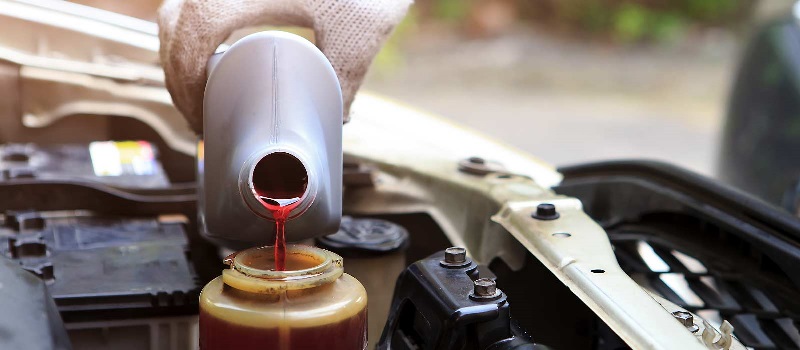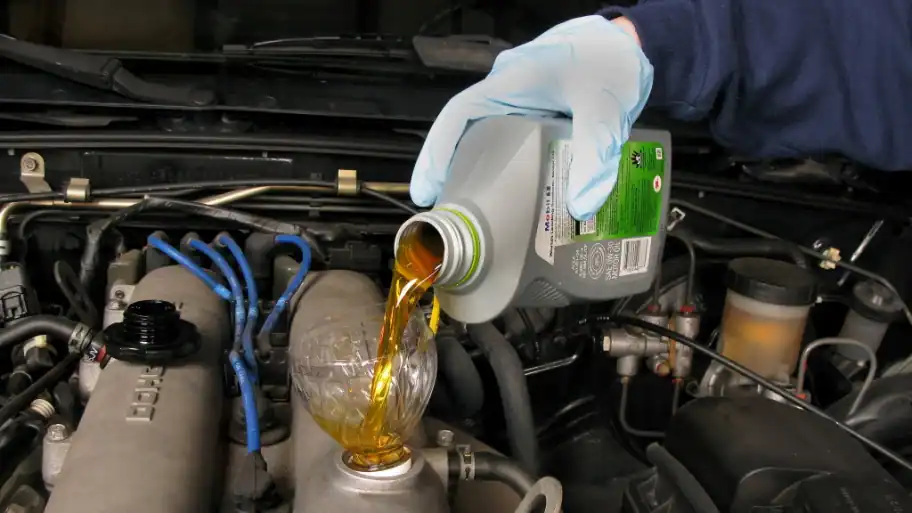
What Is Power Steering Fluid?
Like all fluids in a vehicle, the power steering fluid plays an important and special role in keeping the vehicle running at peak performance. This fluid is essential for providing hydraulic assistance to its namesake system so you can turn the steering wheel of your vehicle with ease. It also helps lubricate the power steering pump and steering components. Power steering fluid even prevents corrosion. So, what is power steering fluid and what are the different types of power steering fluid? When do we change the power steering fluid to keep the car running smoothly?
What Is Power Steering Fluid?
Simply put, power steering fluid is the fluid used in the power steering system to create hydraulic linkages between the steering wheel and the front wheels, making it easier to steer. In addition, the power steering fluid lubricates the moving parts of the steering system for optimum performance.
The power steering fluid used in your car is not universal. Some of the most common types of power steering fluid include:
Universal Power Steering Fluid – Most modern vehicles use Universal Power Steering Fluid in their systems and are extremely easy to find.
Synthetic Hydraulic Fluid – If your car is manufactured overseas, you may need to use synthetic hydraulic fluid. This oil is good because it flows well regardless of temperature and extends the life of the power steering system.
Automatic Transmission Fluid (ATF) – Most domestic vehicles manufactured before the turn of the 21st century and after 1970 use this ATF.
A variety of power steering fluids are available, so be sure to double-check which power steering fluid is required for your particular make and model. The type of power steering fluid required can be found on the manufacturer’s website, in the manual, and sometimes printed directly on the reservoir cap.
How Does Power Steering Fluid Work?
Power steering fluid is the hydraulic medium used to form the hydraulic linkage between the steering system and the front wheels. Oil is used to reduce the force used to turn the wheels.
Hydraulic oil also acts as a lubricant for moving parts in power steering systems. It keeps the vehicle running smoothly by preventing foaming in the power steering and pump and reducing corrosion.
Power steering fluid looks like red, pink, or amber fluid. If it’s dark brown and foamy, it may need to be replaced.
What Does Power Steering Fluid Do?
Power steering fluid is the hydraulic oil used in the steering system to establish the hydraulic linkage between the steering wheel and the front wheels. This reduces the amount of work required to turn the wheels.
Power steering fluid also lubricates moving parts within the steering system. It suppresses foam and prevents corrosion in the power steering gear and steering pump, keeping the vehicle in top working condition.
Where Is the Power Steering Fluid?
The power steering fluid reservoir is located under the hood in the engine compartment. It’s usually on the passenger side, but can also be on the driver’s side. The container that holds the power steering fluid is white or yellow and has a black cap on top that says “Power Steering” or “Steering Fluid.”
How Important Is Power Steering Fluid?

Power steering fluid adds “power” to the system. Without it, you may notice that your vehicle turns harder. It’s also the cheapest part of the power steering system, starting at around $100. This goes a long way in keeping the system running smoothly. Without it, the power steering pump would run dry and risk complete failure. This is a costly problem that needs to be fixed, and depending on the level of damage, can cost you thousands of dollars. Simply put, it pays to take care of your power steering fluid.
What Are the Power Steering Fluid Standards?
The viscosity of the power steering fluid, additives, and detergents need to be specified. If these specifications are met, the power steering fluid is safe for use in the vehicle’s power steering system.
Power steering fluid specifications are set by standardization organizations such as ISO.
Some vehicles require power steering fluid to meet these specifications in order to function properly. Automakers will refer to these standards in their relevant power steering systems.
How Often Should I Change Power Steering Fluid?
Yes, your car’s power steering fluid must be changed like any other fluid in your car, but the answer isn’t as clear as engine oil. Ultimately, the frequency of changing power steering fluid depends on a variety of factors: the type of fluid used, how often it is used, driving habits, and more.
In general, our local auto mechanics recommend a thorough flush and fluid change at least every two years or every 75,000 miles.
Signs You Need to Replace Your Power Steering Fluid
In some cases, you may need to change the power steering fluid early. To make sure your power steering remains in top shape, it’s important to know some of the signs that it needs to be replaced soon. Some common signs include:
Color Change – If your power steering fluid is dark in color, has a burnt smell or just looks different from the normal reddish color, it’s time to replace it.
Difficulty steering – notice resistance when trying to steer? Any loss of power in the steering system will tell you it’s time to flush and replace.
Debris – After a while, the power steering fluid becomes abrasive and can have rubber and metal specks that can turn into sludge if ignored long enough. Often accompanied by a burnt smell, this is a signal that it’s time for a full fluid replacement service.
Also, if you notice bubbles, leaks, or strange noises in the power steering fluid when trying to steer, consult a professional automotive technician immediately. This could mean that the power steering system or the pump itself is damaged.
How Do I Check my Power Steering Fluid?
Just like other fluids in your car, it’s important to check with the dipstick regularly. This helps you catch any problems with the system before it starts. You can check the power steering fluid at home by following these simple steps:
Locating the Reservoir – The power steering fluid reservoir is located on top of the power steering pump. This is usually on the side of the engine and can be easily found by searching for the belt that drives the pump.
Remove the cover – Once your car is off and ready to start, remove the cover. This allows you to check the dipstick and helps you identify the fluid level. This is a great time to check for any signs you need to replace the ones mentioned before.
Add more fluid – If your fluid level is too low and the fluid is healthy, add more fluid to the appropriate line on the reservoir or dipstick.
If your system seems to be losing fluid quickly, there may be a leak and you should have your vehicle checked by a professional auto mechanic.
Risks of Not Changing Your Power Steering Fluid
Like other fluids in your vehicle, the power steering fluid must be changed regularly. Otherwise, your car could face serious damage, not to mention the inconvenience of turning the steering wheel without any assistance. Some of the risks you face by not changing your power steering fluid include:
- Draining the Power Steering Fluid Reservoir
- Deteriorated seals, leading to leaks
- Increased difficulty in turning
- whine when turning
- increased wear
- Your vehicle is all broken down
- Additional stress on other parts of the power steering system (may cause failure)
Your power steering fluid doesn’t last forever, and neither does the power steering system. Don’t wait until the last minute to change the fluid or deal with any needed repairs, take the cost-effective approach and get it done today!
Conclusion
The next time you drive out and you notice that it takes more force to steer the vehicle, the culprit is most likely the power steering fluid. We tend not to think too much about modern cars, but power steering is necessary for both a safe and enjoyable driving experience.


Average Rating